The happy 5 percent and the panicking middle class
"A new, prospering middle class forged by new successful business and emerging from deep parts of society is gaining power and placing itself at the forefront of the bourgeoisie." Such exhilarating words had come from Ümit Boyner in 2012, the then-president of TÜSIAD, the Turkish Industry and Business Association. Was Boyner's new middle class able to achieve such an expectation?
"A new, prospering middle class forged by new successful business and emerging from deep parts of society is gaining power and placing itself at the forefront of the bourgeoisie." Such exhilarating words had come from Ümit Boyner in 2012, the then-president of TÜSIAD, the Turkish Industry and Business Association.
Boyner had argued that with the advent of the new middle class, debates would no longer be steered by cultural codes but by rational operations as well as management and decision codes. As a result, transparency, accountability, respect for the rule of law and for property rights would increase in importance.
Was Boyner's new middle class able to achieve such an expectation?
First of all, let us examine the transformations underwent by the new middle class.
The graphic below, drawn up by data from the World Bank, shows the change in the share of middle class income overall. It should be noted that the chosen countries are known to have authoritarian regimes. Some similar countries were excluded to keep the graph simple, but it should also be noted that the situation was not that bright in those countries either. While the global average increased, such countries experienced a significant meltdown.
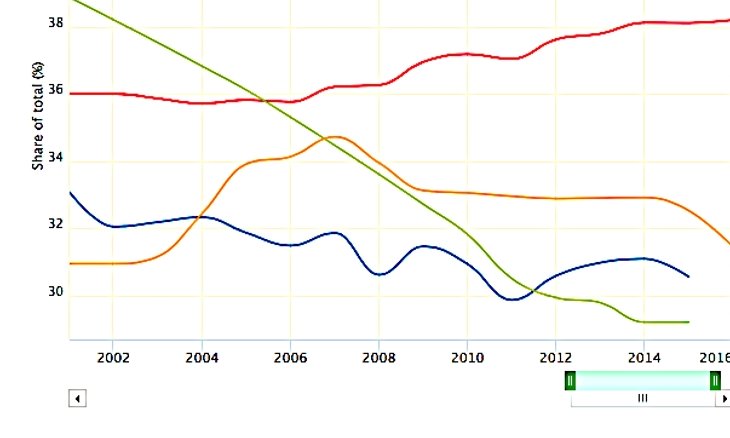
On the other hand, the table below was taken from the official bulletin published by the Turkish Statistical Institute TÜİK to announce data on income distribution. A decrease in every group other than the top 20 percent is clearly seen after 2013.
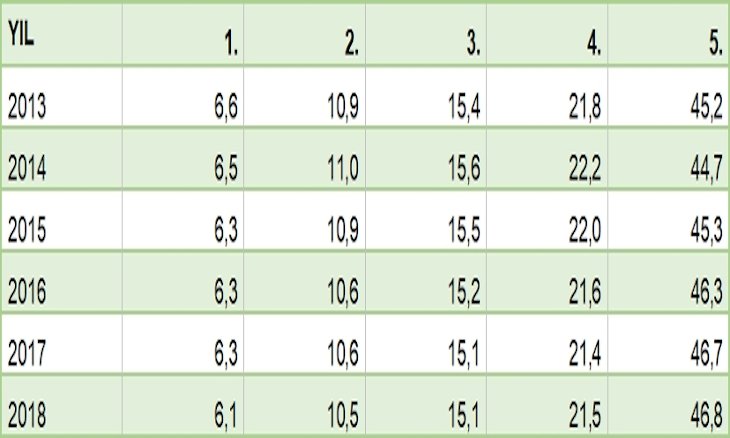
When we divide that table into 10 percent portions, the outlook is slightly different.
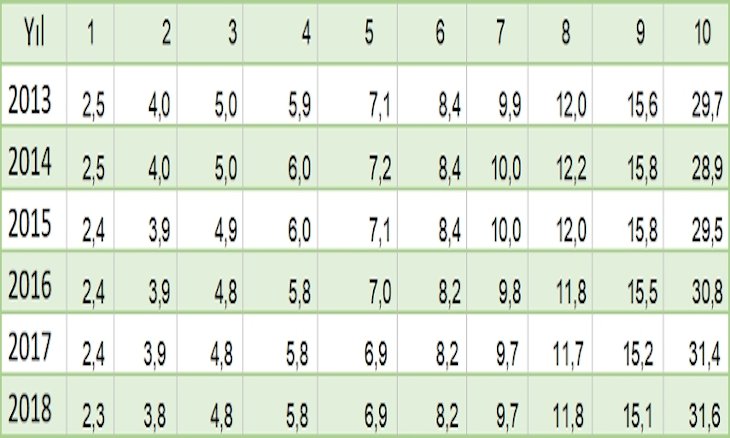
Except for the 10 percent at the top, all the other portions saw a loss since 2013. But the portions that most consistently saw a loss were the ones closest to the top.
Below is the lowest 40 percent, divided into 5 percent categories:
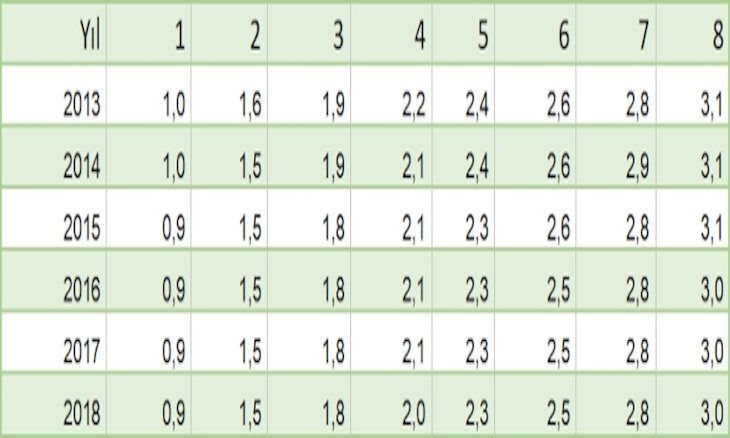
There is almost no significant change. Although there are some 0.1 point changes, their share over the last three years has largely remained the same. The same result is seen in the middle 40 percent of population as well. They have also experienced small losses compared to 2014, but their share over recent years has remained constant.
Now if we examine the 20 percent who get the biggest share of income: when we divide that into 5 percentiles, things get very interesting:
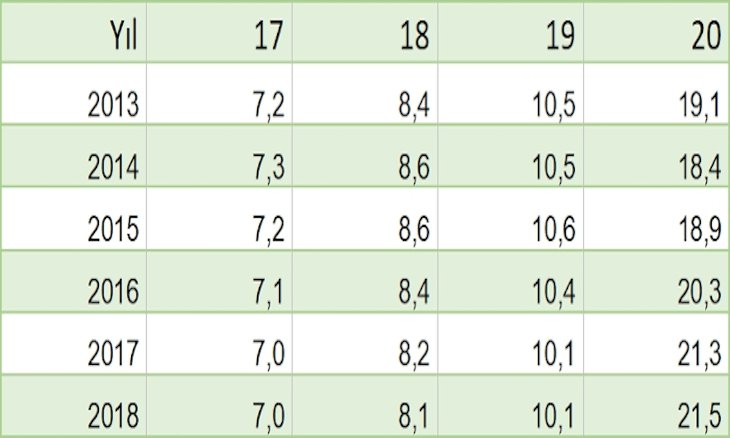
We see great losses compared to the poorer sections of society. Especially those closer to the top 5 percent, who have been steadily increasing their income, are the ones that have seen consistent losses for the past three years.
So what do all these tables tell us? They are not sufficient to draw big conclusions, but they give us some insight.
In sum: whilst comparing the poorest sections to 2014, when everyone in th from the lower-middle classes was raising its income, the average loss is about 0.1 points. This segment of society, which covers 60% of the population has seen almost no change in income in recent years.
For the remaining 40 percent, as we go up to higher income groups, income further decreases. From the highest part of the middle class to the highest 5 percent, the loss in the income share goes up from 0.2 percent to 0.5. Other than the top 5 percent, no group has seem an increase in their share of income.
This is the "new middle class" that Boyner was talking about with hope, which was supposed to "move toward the forefront of the bourgeoisie".
A major problem is that of poverty and unemployment which for the lower classes have become almost as official as their identity cards, and perhaps even a part of their identity, a "lifestyle" so to speak. The correlation between chronic poverty and political stagnation ought to be examined.
What about those who have quickly lost what they have, even though they think they are in the upper sections? Do they become envious of those above them, or panic whilst looking at the gap from below? What kind of political attitudes would this panic bring about?
The Italian literary theorist Franco Moretti says the middle class is no less than a "nickname" for the bourgeoisie. This metaphor does not only come from the fact that the word "bourgeoisie" itself is derived from "in the middle". It also has to do with the fact that the middle class carries the values, culture and politics of the bourgeoisie. In that sense, the relationship between democracy and the middle class mirrors that between capital ownership and democracy.
A capital-owning class that has severed all connections with those below needs a surrogate to establish the hegemony of its social imagination. That substitute is the middle class, who are expected to serve as examples to the lower classes in terms of life standards.
The chunk of society that rose after the 2000s by combining the opportunities of neoliberal transformation with their education was described as the "new middle class". While they could not become the bourgeoisie because they did not own capital, they nonetheless emulated it thanks to their newly-found income.
In 2009, The Economist magazine dedicated one of its front pages to the "new age of the middle class." It claimed that, for the third time in history, the engines of development and democracy were in the hands of these classes. In other articles published by TÜSIAD-affiliated magazines, the rising middle class were cited as examples of the AKP's economic success.
The current economic crisis underwent by Turkey is undermining this very achievement. What history shows is that crises are usually tackled through authoritarianism rather than democratization.

